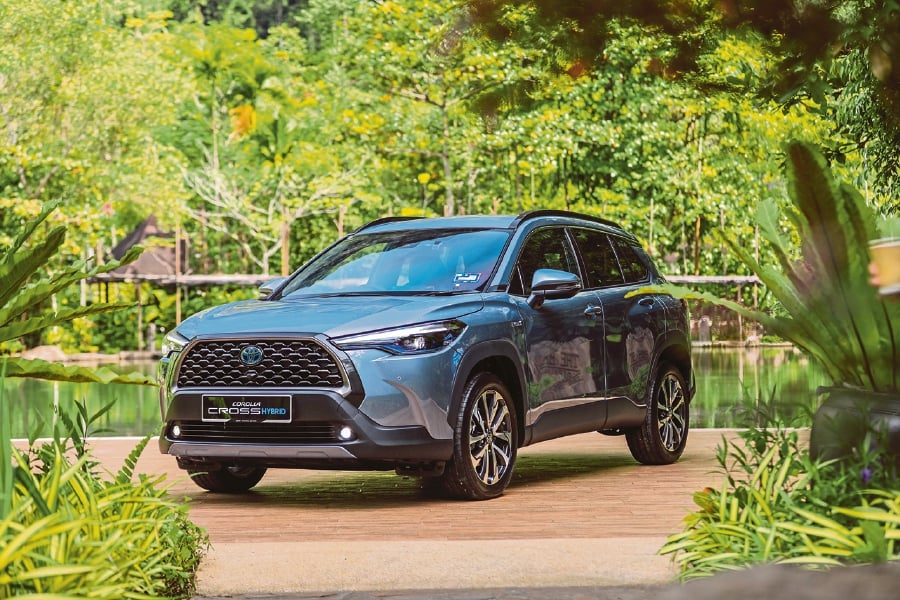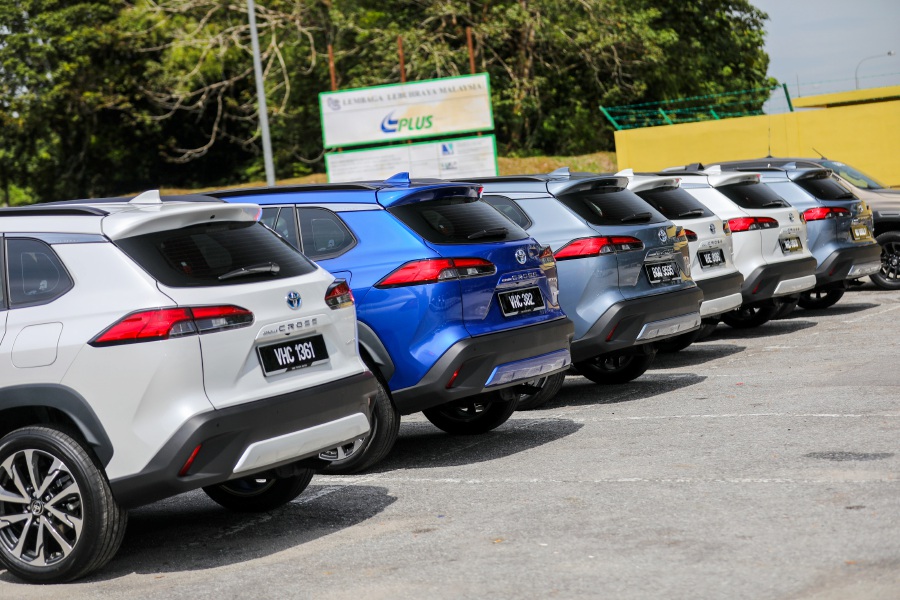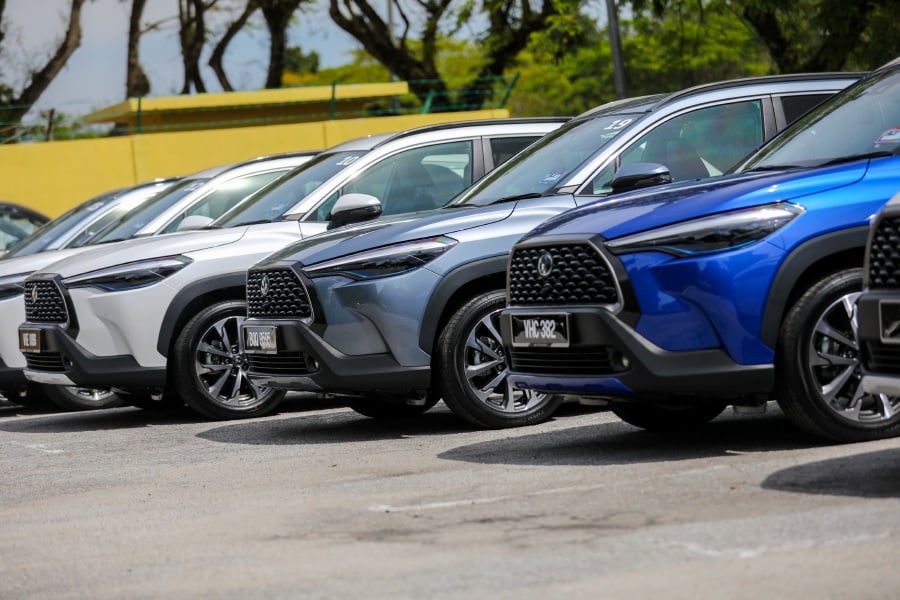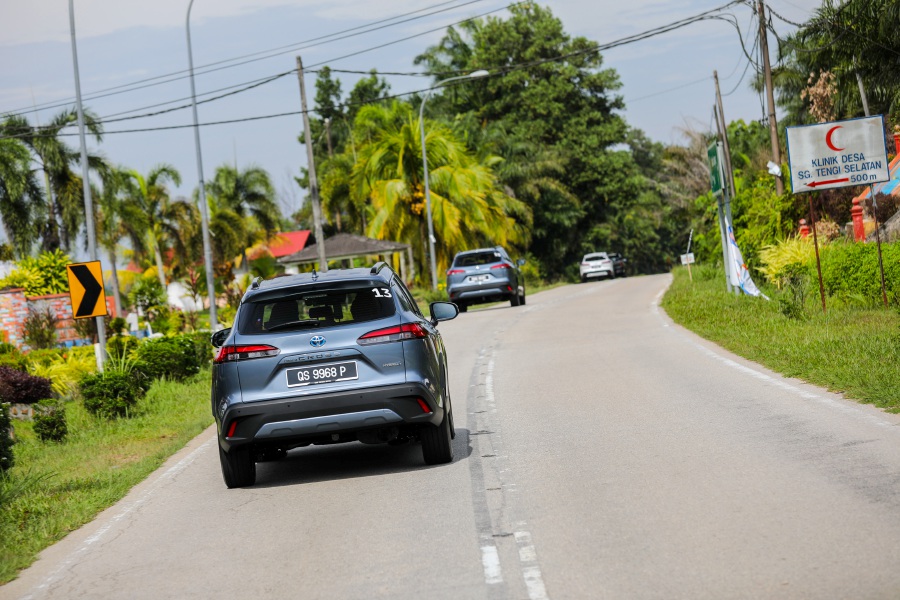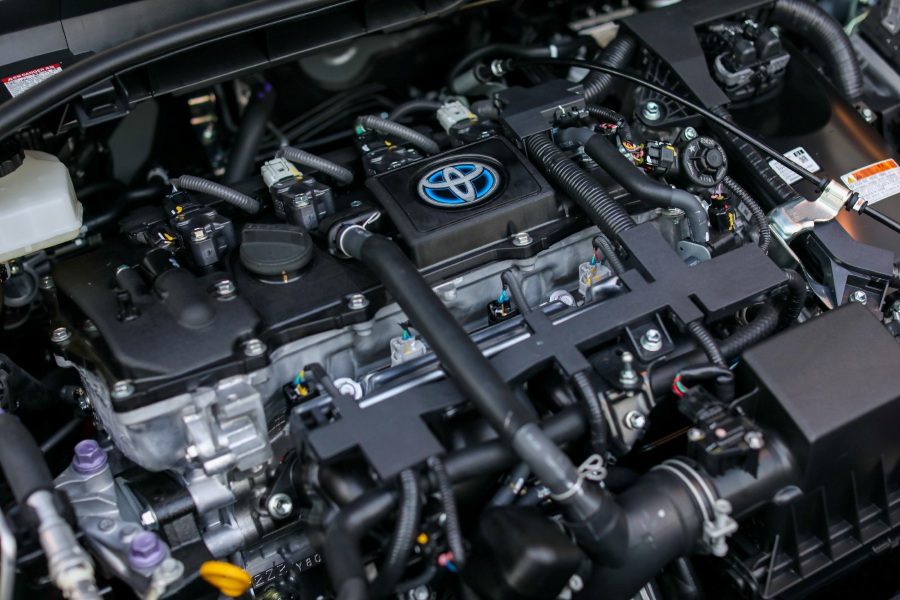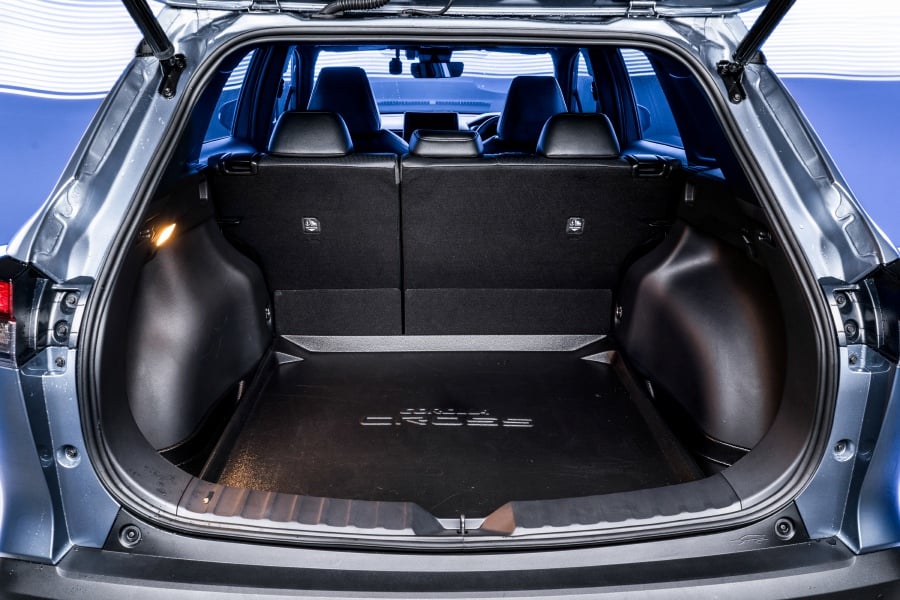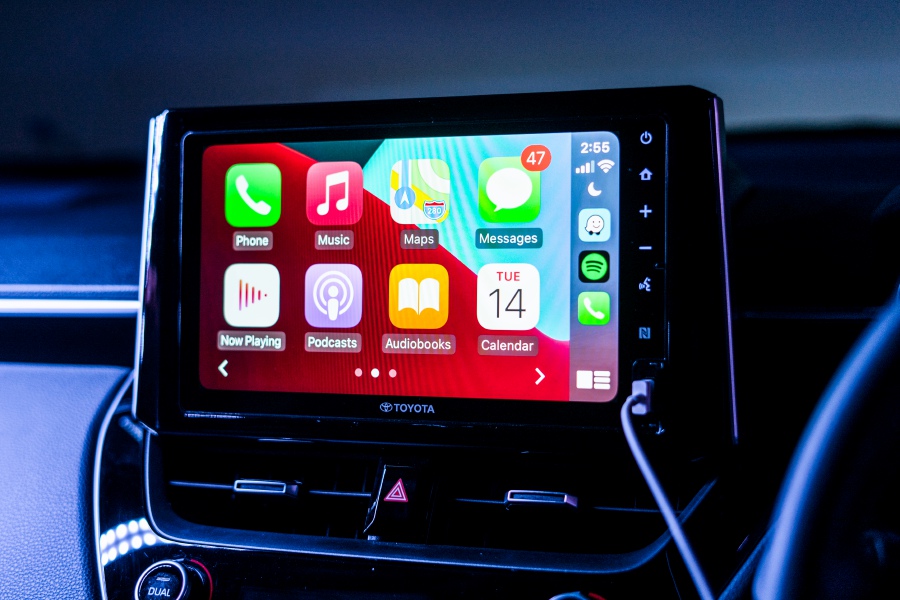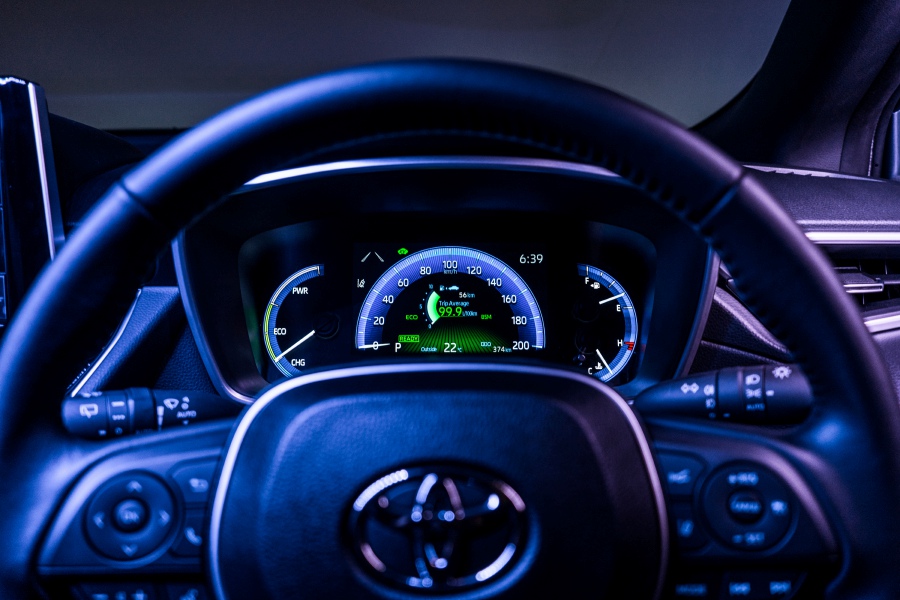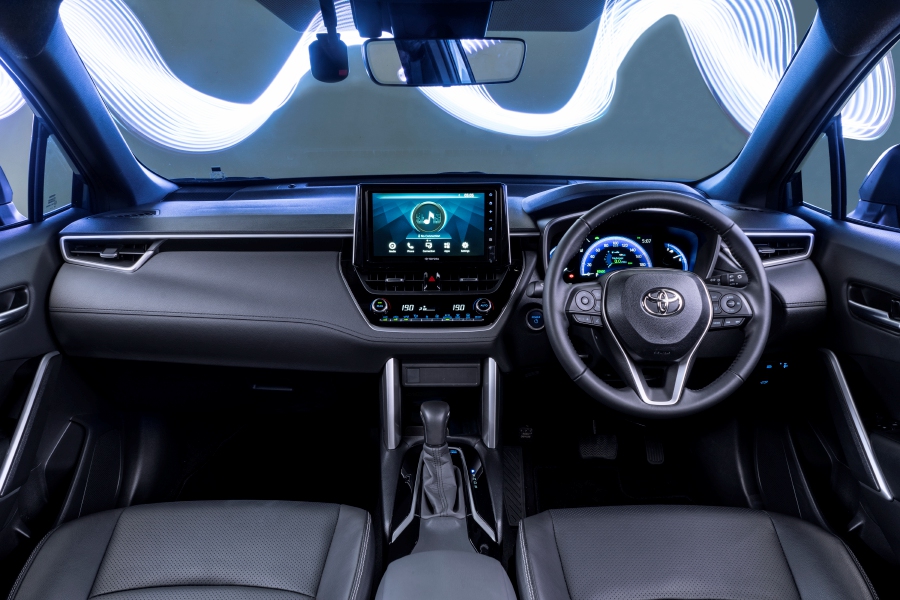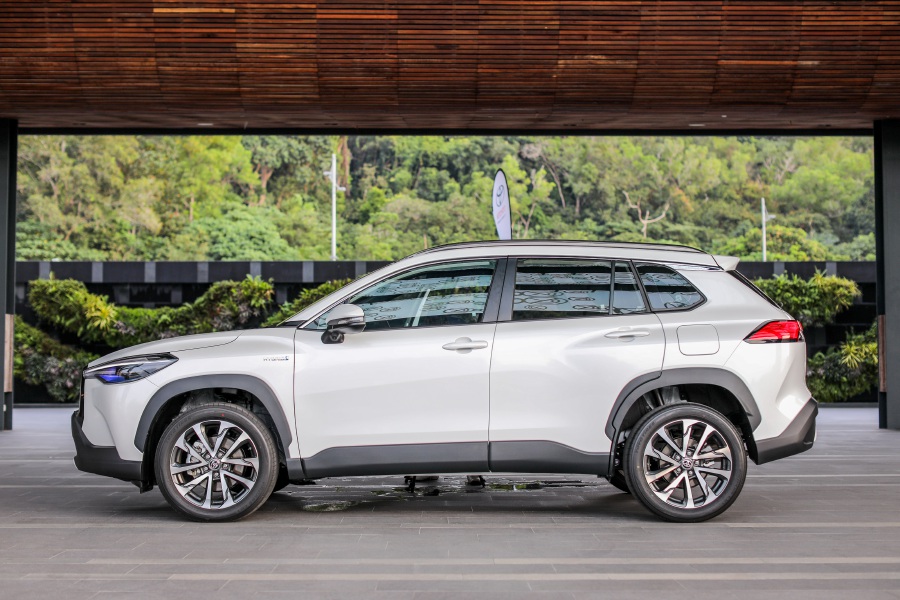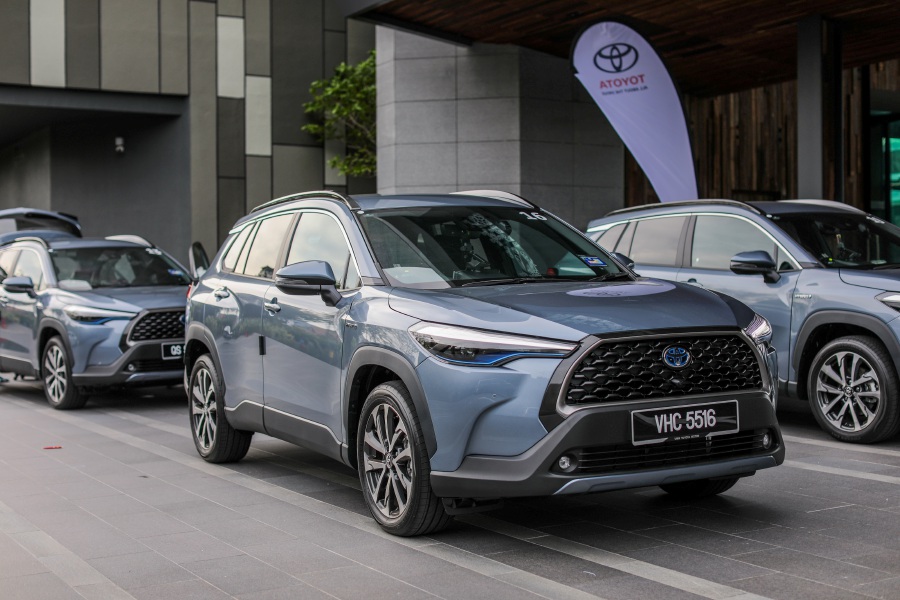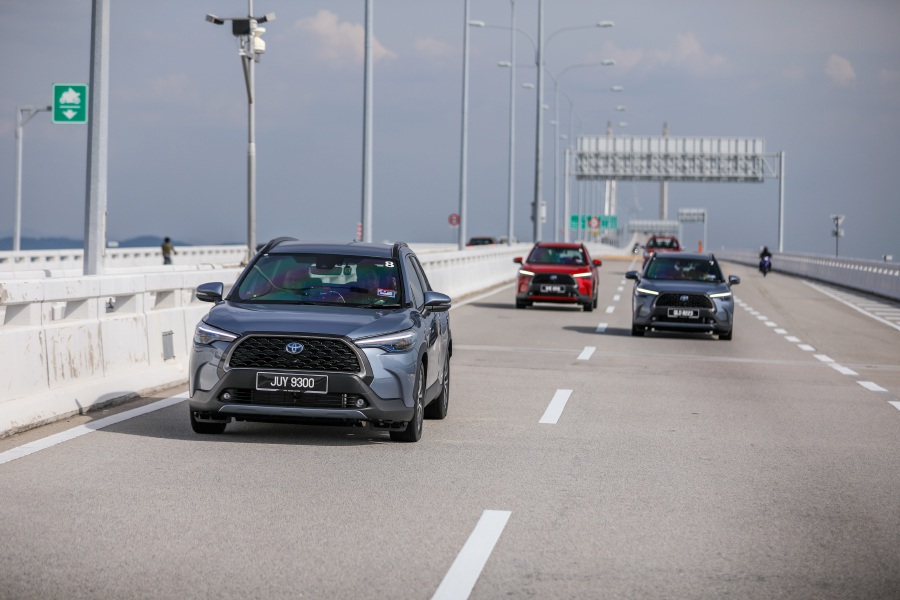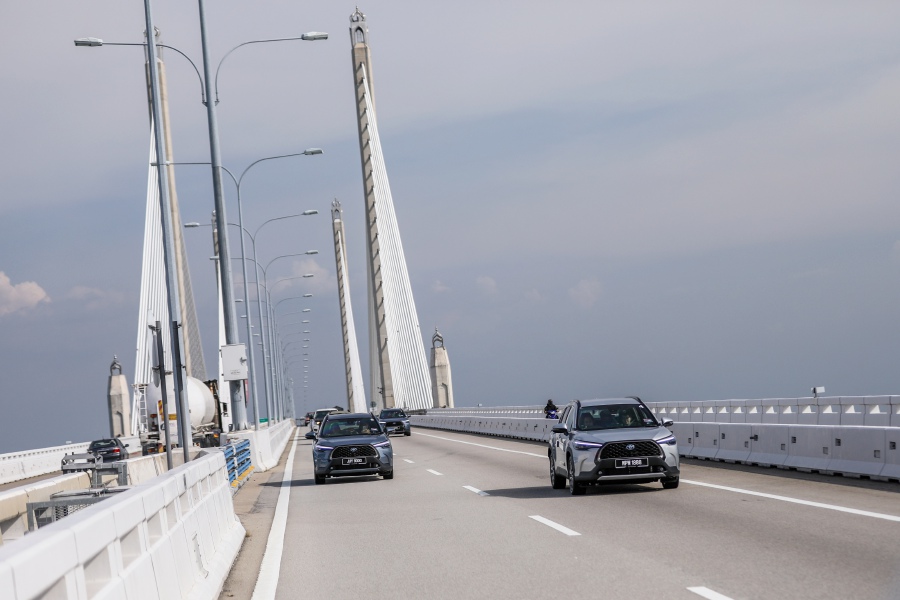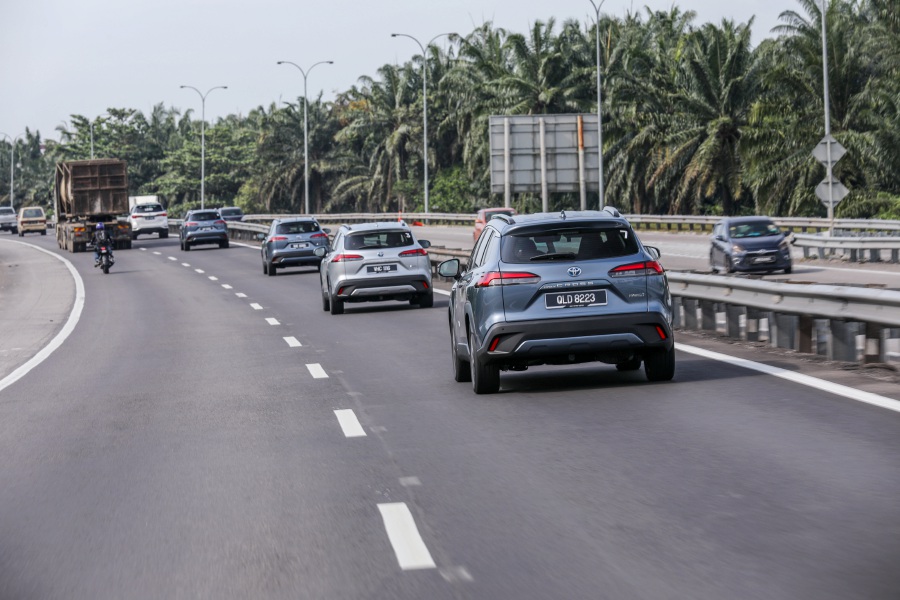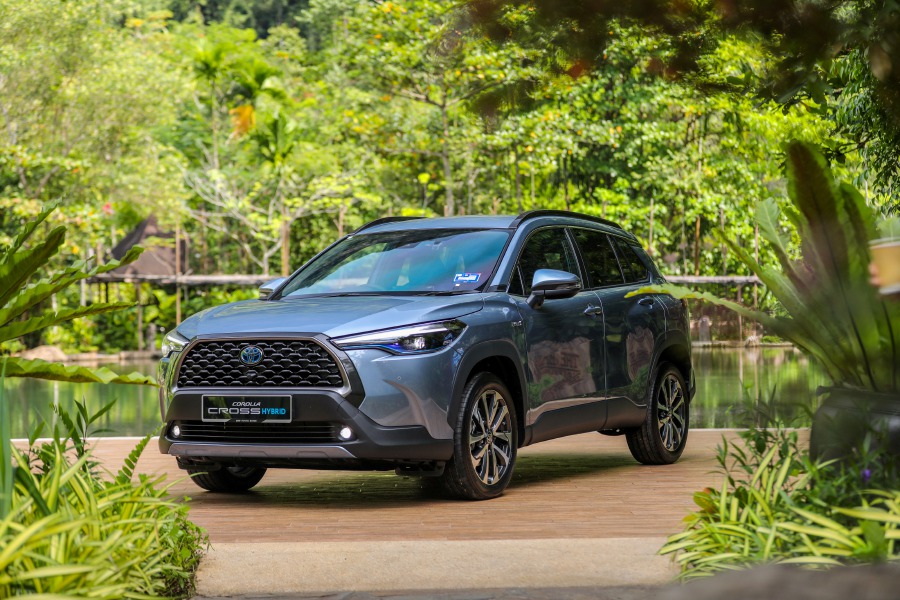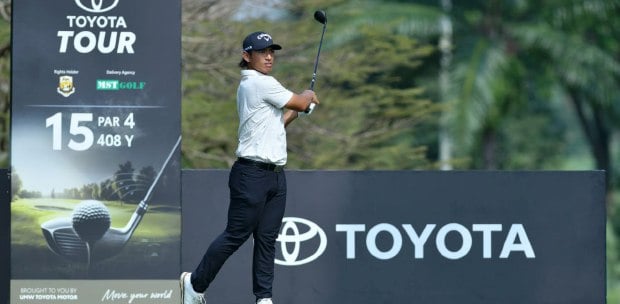Almost a year ago we had a go with the petrol variants of the Corolla Cross.
Our time with it around the Klang Valley was short but there was a lasting charm to the crossover sports utility vehicle (SUV).
Mainly, it displayed what the Toyota New Global Architecture (TNGA) platform was truly capable of with the level of suspension comfort few could rival.
With the introduction of the Hybrid variant the media was given more time to experience what the SUV had to offer - almost two full days with it.
I'm happy to report that it is more than just a hot take on the much-discussed energy efficient vehicle (EEV) debate. A number of us also wished we could take a Corolla Cross home for our daily use.
Hybrid x TNGA
As the name implies, the biggest change in the Corolla Cross Hybrid is its 4th Generation Toyota Hybrid System.
Engine setup is a combination of an 1.8L petrol engine (4-cylinder, In-line, 16-Valve DOHC with VVT-i) that produces 98PS at 5,200rpm and 142Nm of torque at 3,600rpm with two electric motors paired to an E-CVT.
The electric motor generator has a max output of 53kW and 163Nm, and the nickel-metal hydride battery has a 201.6V and 6.5(3) Amr(hr) capacity. In all the powertrain has a total output of 122PS.
Fuel consumption is mentioned to be rated at 23.3km/litre with fuel tank capacity at 36 litres.
Four drive modes are available: Sport, Eco, Normal and EV (electric vehicle). However they generally work in tandem as opposed to individual settings such as EV mode only working at speeds below 40kph (automatically kicking you out of the mode after the threshold), Sport for more acceleration boost at the cost of fuel and battery, and Eco alternates between drivetrain conditions for maximum fuel efficiency.
The Hybrid Electric System's performance on the move is automatically delivered by the preferable combination between the electric motor and petrol engine in response to driving conditions. The system also automatically shuts down the petrol engine to avoid wasting fuel when idling. This all works in tandem to produce significantly better fuel efficiency.
HEV battery that powers the electric motor is automatically recharged when the driver brakes (regenerative braking), when the driver lifts off the accelerator pedal, or when the petrol engine is on and running. The system does not require drivers to plug-in to recharge the batteries which eliminates all concerns relating to limited driving range or the need to look for charging infrastructure.
Outside the engine setup almost everything else closely resembles the petrol variants including the return of the TNGA platform.
Front lamps are Bi-LED with blue accents and follow-me-home function. Cabin theme is black with black leather upholstery for the seats, while satin-finish paint is used to highlight ornamentation parts. There's LED illumination on the front door trim and an 8-way Power Adjustment seat.
Its instrument panel is a larger 7-inch Colour TFT colour Multi-Information Display (MID). At the centre of the dashboard is a 9-inch panel display audio and infotainment system, as well as the image from the rearview camera. The system is Apple CarPlay and Android Auto compatible with USB mirroring, AUX, and Bluetooth as other connectivity options.
There's automatic dual-zone climate control air-conditioning and steering control allows for audio, MID, telephone, Adaptive Cruise Control and Lane Tracing Assist toggle.
Conveniences such as Smart Entry and Push Start System to lock/unlock the doors and start/stop the engine, and Power Back Door with kick proximity sensor are present.
Cargo area with tonneau cover has a volume of 440 litres with the rear backrests raised. It is said to be possible to carry two road bicycles when both backrests are folded down.
It has an Asean NCAP maximum 5-star safety rating with a complete suite of Toyota Safety Sense (TSS) safety features which include: a Pre-Collision System (PCS), Lane Departure Alert (LDA) with Steering Assist, Dynamic Radar Cruise Control (DRCC), Lane Tracing Assist (LTA) and Automatic High Beam (AHB).
These core technologies use a radar and camera which are complemented by other safety technologies such as a Blind Spot Monitor (BSM) with Rear Cross Traffic Alert (RCTA), Tyre Pressure Warning System (TPWS), seven SRS airbags, and a Digital Video Recorder (DVR) at the front (optional for rear).
Additionally, a Vehicle Telematics System (VTS) can track the vehicle's position using GSM/GPS signals. The owner can also monitor the ignition status and vehicle speed if the vehicle is stolen, a 24/7 Command Centre will locate it and inform relevant authorities to recover it. All Corolla Cross variants comes with a 3-year free subscription of the VTS.
Overall body length is at 4,460mm with an overall width at 1,825mm, and 1,620mm in height. Ground clearance is raised to 161mm.
It has the best-in-class 5.2-metre turning radius. Oddly for all its tech the SUV adopts a manual pedal instead of an electric parking brake.
The drive
Since the real change with the Hybrid is its engine the Corolla Cross comes with all the good and not so from last year's models.
This goes for passenger space up front being a little tight if you want to wiggle yourself around a lot. If the front passenger's seat is pushed too far upfront your knees would also block the front compartment from opening.
Then there's the magical TNGA platform that was immediately felt from the moment we set off our journey from UMW Toyota HQ in Shah Alam to the North-South Expressway (NSE). The sensation reminded us for the most part why we loved the Corolla Cross in the first place.
Speed bumps and potholes were cleared with ease as we glided through them. A testament to the TNGA platform suspension that, as with the petrol variants, came off as dreamy.
The engine was also relatively quiet to no surprise. One legacy element from the petrol variants was the low-but-weighty engine roar when the SUV was pushed to go over 120-130kph. Thankfully the new powertrain smoothened the acceleration process making the drive exceptionally seamless and not feel too much of a struggle unlike the petrol models.
Our first true challenge came as we detoured through the Bukit Tegar - Behrang path as we made our way to The Banjaran Hotsprings Retreat in Ipoh, Perak for lunch. Weaving through the winding roads on a beautiful clear day was all the more comfortable with the TNGA platform.
After lunch we made our way straight to the Hotel Angsana Teluk Bahang at the far end of Penang Island via NSE. The media was tested quite a bit during this leg of the drive.
This came in the form of the lead car of our convoy capping our speed to around 130kph for the most of the journey and navigating the tight winding roads of Batu Feringghi.
By the end of the drive we clocked in a fuel consumption between from 8.1 to 7.3L/100km with 93km left in the fuel tank distance to spare. Very impressive when you consider this was all done in one single tank straight from the start.
Our second day return drive to Shah Alam was more straight forward as we blazed through the NSE hoping to beat the evening jam. Even in Sport Mode at intervals we achieved a decent 60km left in a single tank. Talk about fuel economy.
As mentioned Eco Mode only works up to speeds of 40kph at most. We were told the SUV's battery only goes for an estimated 2-3km in pure electric mode before it starts to alternate back and forth with fuel.
Adding to the TNGA platform's credit was how most of the passengers, especially in the rear seat where there's ample legroom regardless of front seat positioning, mostly slept throughout the entire journey on both days. Did we already mention a testament to comfort?
Verdict
How do you make a good model even better? As it turns out it's all about focusing on opportunity and not messing with what works.
The Corolla Cross already was a solid vehicle when it was launched. Its not without its faults but its sporty-modern design with a winning suspension platform made the SUV a standout last year.
By giving it the Hybrid touch Toyota just put the Corolla Cross on cloud nine.
Performance-wise its still not the fastest ride in town but there's no denying what was already a comfortable ride became even more of a sail if on calm waters if you catch my drift.
The boon of it being Hybrid is also its fuel efficiency. The distance we covered on a single tank was economically admirable by any standard considering we made a prior detour on our trip.
The SUV makes for good argument on Toyota's part that hybrid technology being a sufficient platform for Malaysian road users. With such display in performance one could debate if EVs are a necessary step up when we consider the cost and time involved for mass adoption.
That's not to say one is entirely better than the other but rather if the Corolla Cross Hybrid is anything to go by then holding out just for an EV would be you missing out on a great ride.
Hybrid technology is clearly here to stay and the TNGA platform still has much to offer. Put the two together and you got yourself one of the best drives in town.
It is available in five colours: the Celestite Grey Metallic that's for the Hybrid model only, a new Silver Metallic, Nebula Blue Metallic, Platinum White Pearl and Red Mica Metallic.
With a starting price of RM136,550 (without insurance) it comes with a 5-year/unlimited mileage factory warranty, and a separate 8-year/unlimited mileage warranty covering the hybrid battery pack, inverter and Power Management Control Unit.
In a local industry first, customers can also extend their warranty for a further two years to make it a total of 10 years.


